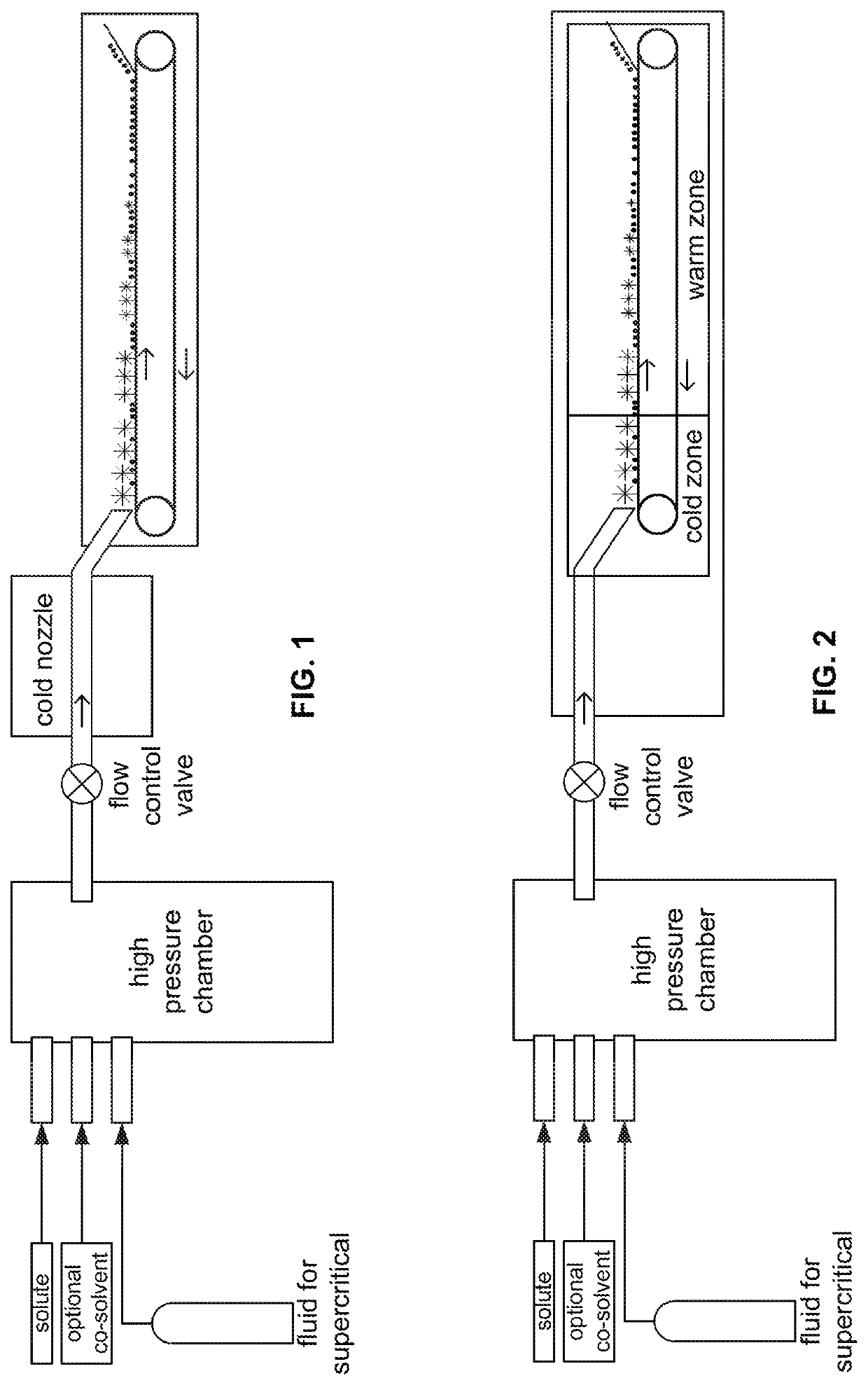Process to produce nanoparticles
- Summary
- Abstract
- Description
- Claims
- Application Information
AI Technical Summary
Benefits of technology
Problems solved by technology
Method used
Image
Examples
Embodiment Construction
[0035]The present invention provides a system for preparing nanoparticles of substances by use of a fluid in a supercritical state that disperses the substance in the fluid in the supercritical state, and then releasing the substance-containing fluid from its supercritical state in a way that results in formation of nanoparticles of the substance and solidification of the fluid onto a surface. Thereafter, the solidified fluid is allowed to sublime or evaporate, and nanoparticles are left behind and can easily be collected for subsequent use.
[0036]Many different materials, usually fluids, are capable of reaching a supercritical state, under the proper conditions of pressure and temperature. In the present description, and in the invention overall, the fluid of choice and the fluid used in describing the present invention, is carbon dioxide, CO2. When CO2 is in its supercritical state, it is generally referred to as scCO2. The fluid is exemplified herein as CO2, but also other fluids ...
PUM
| Property | Measurement | Unit |
|---|---|---|
| Size | aaaaa | aaaaa |
| Size | aaaaa | aaaaa |
| Size | aaaaa | aaaaa |
Abstract
Description
Claims
Application Information
 Login to View More
Login to View More - R&D
- Intellectual Property
- Life Sciences
- Materials
- Tech Scout
- Unparalleled Data Quality
- Higher Quality Content
- 60% Fewer Hallucinations
Browse by: Latest US Patents, China's latest patents, Technical Efficacy Thesaurus, Application Domain, Technology Topic, Popular Technical Reports.
© 2025 PatSnap. All rights reserved.Legal|Privacy policy|Modern Slavery Act Transparency Statement|Sitemap|About US| Contact US: help@patsnap.com

